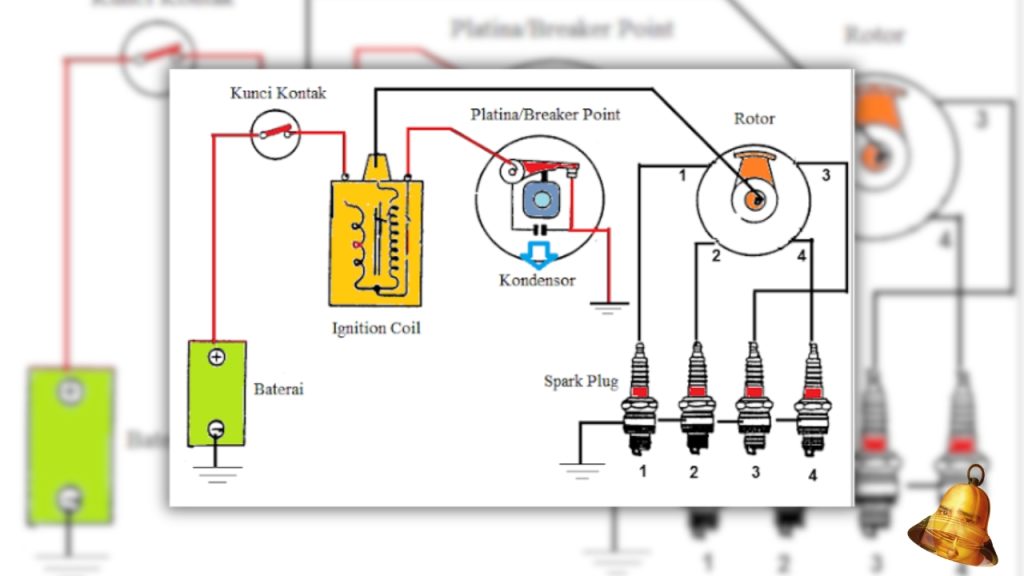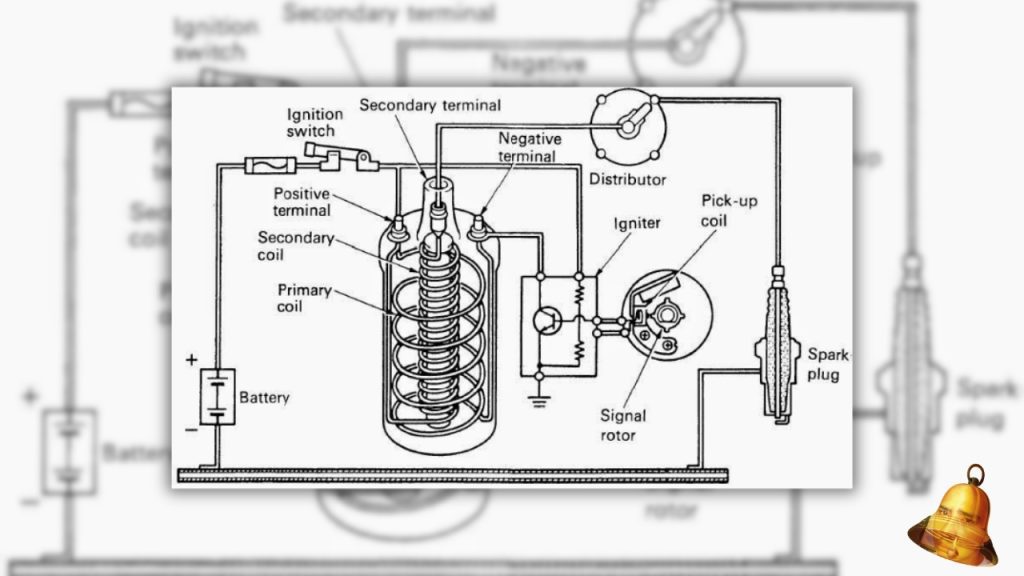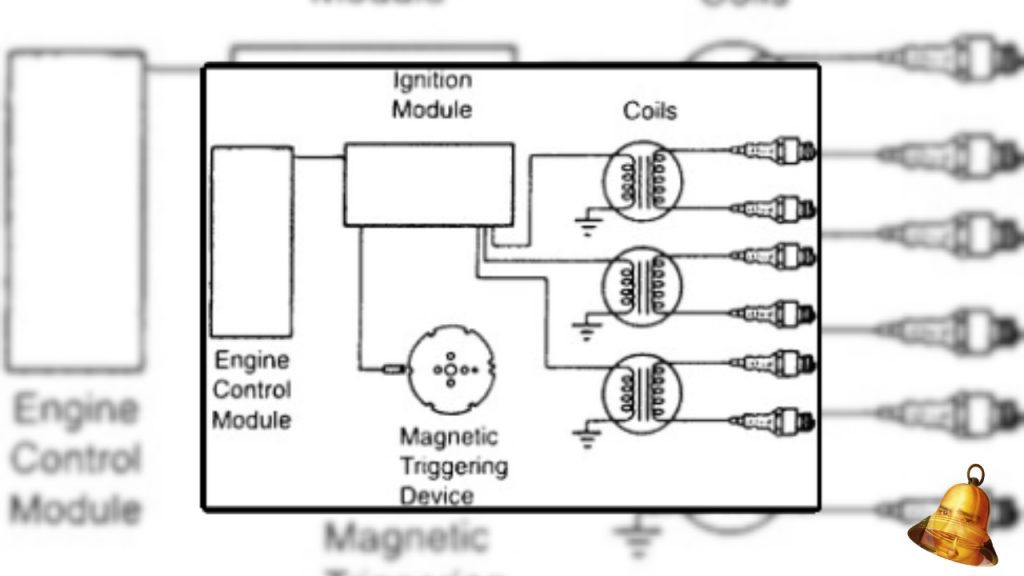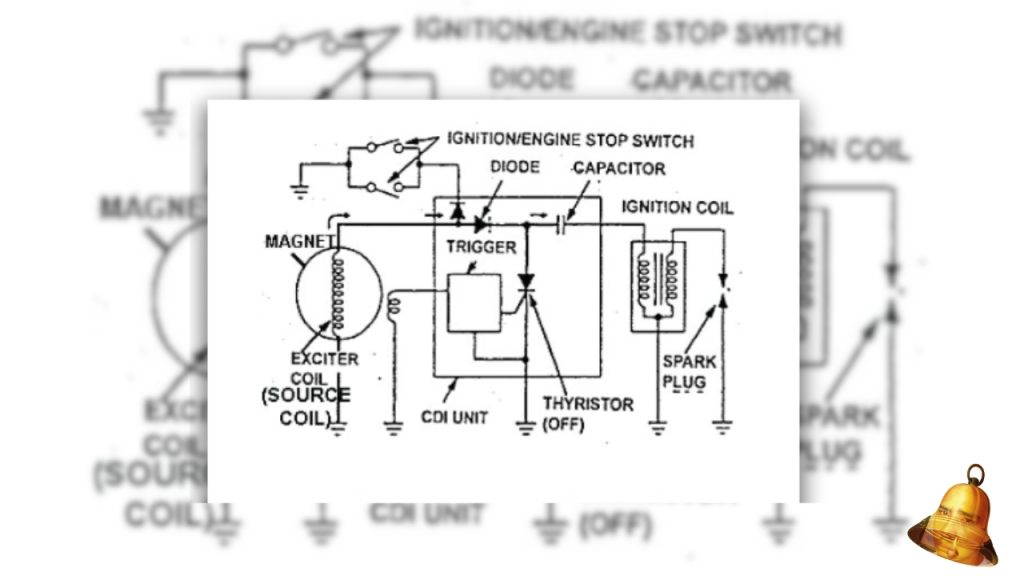Hello friends Summarized! This time we will discuss an article about the function of the ignition system on a vehicle. Do you know what the ignition system is on a vehicle? The ignition system is a system that functions to generate sparks in the engine’s combustion chamber. This spark is needed to ignite the air and gasoline mixture that enters the engine cylinder. Without the ignition system, the engine will not be able to start and produce power.
Functions of the Ignition System on Vehicles and How It Works
The ignition system consists of several main components, namely:
- Battery : a low-voltage power source (12 volts) that supplies electric current to the ignition system.
- Ignition switch : a switch that connects or disconnects the electric current from the battery to the ignition system. The ignition switch is usually located in the vehicle’s ignition.
- Ignition coil : a component that functions to increase the electric voltage from the battery to a high voltage (about 20,000 volts) needed to produce a spark at the spark plug.
- Distributor : a component that functions to distribute high-voltage electric current from the ignition coil to each spark plug according to the order in which the engine cylinders are fired.
- Spark plug : a component that functions to convert a high-voltage electric current into a spark in the spark plug electrode gap. The spark plug is mounted in the engine cylinder head and has an electrode gap of approximately 0.8 mm.
Types of Ignition Systems
Ignition systems in motorized vehicles can be divided into several types, namely:
Conventional ignition system

An ignition system that uses a contact point (platinum) as the ignition coil’s primary circuit breaker. The contact point is influenced by the rotation of the distributor shaft and vacuum advancer to set the right ignition timing. This system is mostly used in old or classic vehicles.
Transistor ignition system

An ignition system that uses a transistor as the primary ignition coil circuit breaker. The transistor is influenced by an electrical signal from the crankshaft position sensor (crankshaft position sensor) or camshaft position sensor (camshaft position sensor) to set the proper ignition timing. This system is more efficient and accurate than conventional systems.
Ignition system DLI (Distributorless Ignition System)

An ignition system that does not use a distributor, but instead uses an ignition module and an ignition coil pack to distribute a high-voltage electric current to each spark plug. This system is simpler and more cost-effective to maintain than systems with distributors.
CDI (Capacitor Discharge Ignition) ignition system

An ignition system that uses a capacitor to store high-voltage electrical energy which is then released to the spark plug via the ignition coil. This system is widely used in motorcycles with single cylinder engines.
Sample case
The following are examples of cases related to the ignition system on vehicles:
- The car will not start or has difficulty starting: this can be caused by damage to the ignition system components, such as a weak battery, faulty ignition switch, dead ignition coil, dirty or worn distributor, dirty or worn spark plugs, broken or leaking spark plug wires, etc. The solution is to check and repair or replace the problematic component.
- The car is clunky or has no power when accelerating: this can be caused by a mismatch between the ignition timing and the condition of the engine, such as worn or loose contact points, damaged vacuum advancers, dirty or damaged crankshaft or camshaft rotation sensors, damaged ignition modules, etc. The solution is to make adjustments or replace the problematic components.
- Cars are wasteful of fuel: this can be caused by incomplete combustion due to weak or irregular sparks, such as a weak ignition coil, dirty or worn spark plugs, broken or leaking spark plug wires, etc. The solution is to clean or replace the problematic components.
Conclusion
Thus a brief explanation of the function of the ignition system on a vehicle and how it works. The ignition system is a very important system for generating sparks in the engine’s combustion chamber which can ignite the air and gasoline mixture. The ignition system consists of several main components, namely the battery, ignition switch, ignition coil, distributor, and spark plugs. Ignition systems also have several types, namely conventional ignition systems, transistors, DLI, and CDI.
Hopefully this article is useful and adds to your insight. If you have questions or comments regarding this article, please write in the comments column below. Thanks for reading and see you in the next article!


